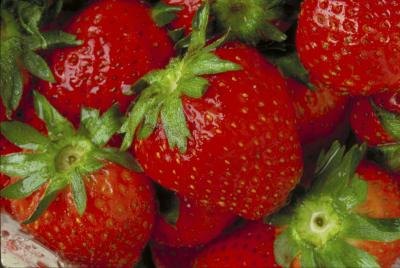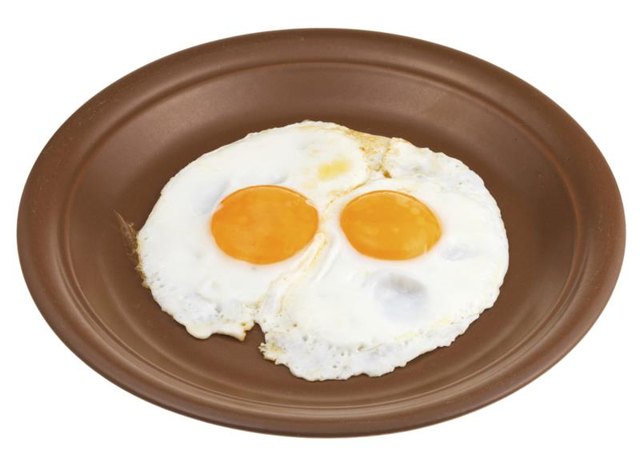In plant morphology, thorns, spines, prickles, and in general spinose structures (as spinose teeth, spinose apical process) are all hard structures with sharp, stiff ends, generally with the same function of physically deterring animals from eating the plant material.
In common language the terms are used more or less interchangeably, but in botanical terms, thorns are derived from shoots (so they can be branched or not, they can have leaves or not, and they arise from a bud), spines are derived from leaves (the entire leaf or some part of the leaf that has vascular bundles inside, like the petiole or a stipule), and prickles are derived from the epidermis (so they can be found anywhere on the plant, and do not have vascular bundles inside so they can be removed more easily and cleanly than thorns and spines)
Leaf margins also may have teeth, and if those teeth are sharp, they are called spinose teeth on a spinose leaf margin some authors consider them a kind of spine). On a leaf apex, if there is an apical process (generally an extension of the midvein), and if it is specially sharp, stiff, and spinelike, it can be called spinose or pungent apical process (again, some authors call them a kind of spine). When epidermis is covered with very long, stiff trichomes (more correctly called bristles in this case, for some authors a kind of prickle) is called hispid vestiture if is covered with stinging trichomes it can be called urent vestiture.
Function
The predominant function of thorns, spines and prickles is deterring herbivory in a mechanical form.
Not all functions of spines or glochids are limited to defence from physical attacks by herbivores and other animals. In some cases, spines have been shown to shade or insulate the plants that grow them: for example, the saguaro cactus spines shade the apical meristem in summer and in members of the Opuntioideae glochids insulate the apical meristem in winter.
Agrawal et al. (2000) found that spines seem to have little effect on pollinators, which the plants need in order to reproduce.
Definition and Technical Distinction
Pointing or spinose processes can broadly be divided by the presence of vascular tissue: thorns and spines are derived from shoots and leaves respectively, and have vascular bundles inside, whereas prickles (like rose prickles) do not have vascular bundles inside, so they can be removed more easily.
(A) Thorn or spine
(B) Prickle
A spinose tooth in a leaf margin.
A spinose apical process.
- Thorns are modified branches or stems. They may be simple or branched.
Thorns are derived from shoots, they can be branched and they can have leaves. They arise from a bud.
Smooth, featureless Citrus thorn.
Gymnosporia buxifolia thorn, its leaves, nodes, and emergence from an axillary bud demonstrating its nature as a branch.
Carissa bispinosa showing characteristic branched thorns.
- Spines are modified leaves, stipules, or parts of leaves, such as extensions of leaf veins.
The spines of Fouquieria splendens (Ocotillo) develop from the leaf petioles.
Stipule spines on Acacia xanthophloea.
Cacti areoles. Shoot (yellow), spines (green) and bristles (brown).
Areoles and spines of the tree like Pereskia grandifolia.
- Prickles are comparable to hairs but can be quite coarse (for example, rose prickles), i.e. they are extensions of the cortex and epidermis.
Raised prickles on the stem of Caesalpinia decapetala.
-
Prickles on the leaves of Solanum viarum.
Spinescent is a term describing plants that bear any sharp structures that deters herbivory. It also can refer to the state of tending to be or become spiny in some sense or degree, as in: "...the division of the African acacias on the basis of spinescent stipules versus non-spinescent stipules..."
Some authors prefer not to distinguish spines from thorns because, like thorns, and unlike prickles, they commonly contain vascular tissue.
Technically speaking, many plants commonly thought of as having thorns or spines actually have prickles. Roses, for instance, have prickles.
Other structures that look alike are spinose teeth, spinose apical process, stiff trichomes and stinging trichomes.
Spinose leaf margin in Ilex aquifolium.
Spinose apical process in Sansevieria.
Stiff sharped trichomes in Galium aparine.
Stinging trichome in Urtica dioica.
Types of Spines
Cacti can have a particular kind of spine (modified leaf) very small and deciduous, with numerous retrorse barbs along its length, this particular spine is called glochidium or glochid (plural glochidia or glochids), as found in areoles of Opuntia. Spines can be petiolar spines as those of Foquieria, leaflet spines as in Phoenix, stipular spines as in Euphorbia, all those are examples of spines developing from a part of a leaf containing the petiole, midrib, or a secondary vein.
Evolution
It has been proposed that thorny structures may first have evolved as a defense mechanism in plants growing in sandy environments that provided inadequate resources for fast regeneration of damage. However, the suggestion was unsupported by any argument to discount the likelihood that spiny defences might have been developed as a means of defence in resource-rich environments where herbivory might have been more intense than in the hypothesized sandy environments.
Morphological Variation
Spinose structures occur in a wide variety of ecologies, and their morphology also varies greatly. They occur as:
- sharpened branches (e.g. in Carissa, Citrus, Crataegus).
- spiky inflorescences (e.g. in Tylecodon reticulatus).
- a tiny point at the tip of the leaf (mucronate leaves) (e.g. in Sansevieria).
- leaves fully converted to spines (e.g. in Opuntia)
- stipules converted to spines (e.g. in many Acacia).
- prickles on stems (e.g. of Rosa, Erythrina and Ceiba speciosa).
- urticating (i.e. stinging) hairs.
- bristles, and
- finely barbed spines called glochids.
Some thorns are hollow and act as myrmecodomatiam, others (e.g. in Crataegus monogyna, bear leaves. Thorns of some species are branched (e.g. in Crataegus crus-galli, Carissa macrocarpa).
In Human Culture
Primitive humans are known to have used thorns as tools. Human history records a variety of cultural references to sharp-pointed plant defensive mechanisms.
The Book of Genesis recounts the creation of thorns as one of the punishments for the sin of Adam and Eve, stating, "Thorns also and thistles shall [the ground] bring forth to thee; and thou shalt eat the herb of the field." Genesis, 3:18. One of the most enduring cultural images is the Crown of Thorns described in the Bible as having been placed on the head of Jesus before his crucifixion. It is mentioned in the Gospels of Matthew (27:29), Mark (15:17), and John (19:2, 5) and is often alluded to by the early Christian Fathers, such as Clement of Alexandria, Origen and others. For example, John's Gospel states that "the soldiers plaited a crown of thorns, and put it on his head". (KJV, ch. 19). The biblical account does not specify what kind of thorns were involved, and leaves no clues from which to determine whether these were biologically classifiable as thorns, spines, or prickles.
An early popular myth involving a thorn is that of Androcles, a fugitive slave in ancient Greece who was said to have befriended a lion by pulling a thorn from the lion's paw.
The status of the Scottish Thistle as the national emblem of Scotland is founded on the story (recounted here) that an invading Norse army attempting a night attack was betrayed when they encountered a thistle in the dark.
Plants bearing thorns, spines, or prickles are often used as a defense against burglary, being strategically planted below windows or around the entire perimeter of a property. They also have been used to protect crops and livestock against marauding animals. Examples include hawthorn hedges in Europe, Agaves in the Americas and in other countries where they have been introduced, Osage Orange in the prairie states of the US, and Sansevieria in Africa.
In modern times, the study of acanthochronology has used the oxygen isotope composition of spines from saguaro cactus to determine historical changes in local rainfall and reconstruct climate and plant ecophysiology over the plant's lifetime.
References
General references:
- Simpson, M. G. 2010. "Plant Morphology". In: Plant Systematics, 2nd. edition. Elsevier Academic Press. Chapter 9.
- Judd, Campbell, Kellogg, Stevens, Donoghue. 2007. "Structural and Biochemical Characters". In: Plant Systematics, a phylogenetic approach, third edition. Chapter 4.
- ^ a b c d e f g h i j Simpson, M. G. 2010. "Plant Morphology". In: Plant Systematics, 2nd. edition. Elsevier Academic Press. Chapter 9.
- ^ a b c d e f g h Judd, Campbell, Kellogg, Stevens, Donoghue. 2007. "Structural and Biochemical Characters". In: Plant Systematics, a phylogenetic approach, third edition. Chapter 4.
- ^ a b c d Turner et al. 2005, Sonoran Desert Plants, an Ecological Atlas. University of Arizona Press.
- ^ a b c Van Wyk, Van Wyk. 2007. How to identify trees in South Africa. Struik.
- ^ Agrawal, A, A., Rudgers, A, J., Botsford, W, L., Cutler, S., Gorin, B, J., Lundquist, C, J., Spitzer, W, B., & Swann, L, A. (2000). Benefits and Constraints on Plant Defense against Herbivores: Spines Influence the Legitimate and Illegitimate Flower Visitors of Yellow Star Thistle, Centaurea solstitialis L. (Asteraceae). JSTOR, 45(1), 1-5. http://www.jstor.org/stable/3672545. retrieved 2012-03-20
- ^ Van Wyk, Braam (2007). How to Identify Trees in Southern Africa (illustrated ed.). Struik. p. 184. ISBN 9781770072404.
- ^ Sengbusch, Peter (2003-07-31). "Cross-Section Through the Prickle of a Rose". Retrieved 2009-04-27.
- ^ Ross, J. H. "A conspectus of the African Acacia species." Series: Memoirs of the Botanical Survey of South Africa, No. 44 Botanical Research Institute, Dept. of Agricultural Technical Services, Pretoria, 1979
- ^ a b Bell, A.D. 1997. Plant form: an illustrated guide to flowering plant morphology. Oxford University Press, Oxford, U.K. preview in google books.
- ^ Steve Brill, Evelyn Dean, Identifying and Harvesting Edible and Medicinal Plants (1994), p. 17.
- Wikipedia


























